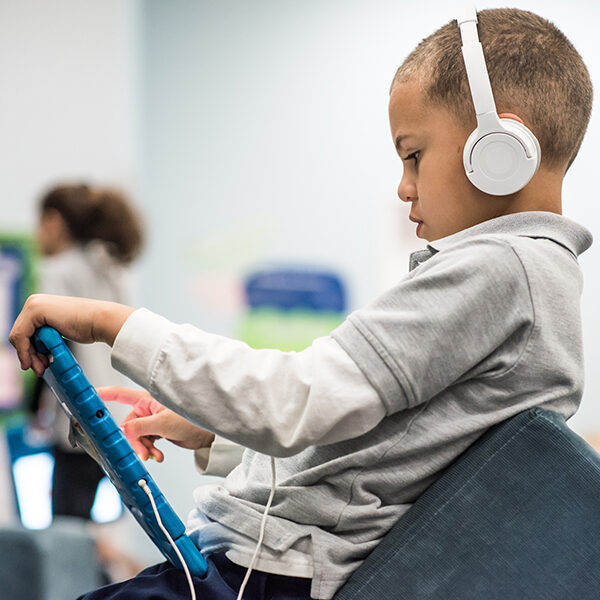
As part of our work to catalyze measurement that increases our evidence base of equitable, effective blended practices, TLA is currently piloting a one-year Fellowship to support research that advances our measurement agenda. Our goal is to help folks across the ecosystem (including future researchers, leaders, and educators) work together towards the mutual goal of all students receiving an outstanding education, enabling them to reach their full potential.
Last month, our three Fellows presented their preliminary findings at the 2018 Blended and Personalized Learning Conference, here are outlines of the studies they’re conducting and a sneak peek into their preliminary findings. Each Fellow will create field-friendly resources to share insights and recommendations from their findings to enable practitioners to incorporate this evidence into their instruction. Look out for these resources on our website over the coming months.
Elizabeth Anthony: How Traditional Best Instructional Practices Impact Blended Classrooms
Elizabeth spent the last few months conducting multiple observations of six classrooms utilizing blended learning – three identified as high-growth, and three as low-growth. She used their NWEA MAP conditional growth percentiles in reading or math to classify their level of growth. For her observations, she was looking for evidence of instructional practices that are known to be effective in traditional, in-person learning environments, so she adapted and modified the Danielson Group’s Framework for Teaching and observed each classroom three times, roughly one month apart. After coding her observations and conducting exploratory descriptive analyses, preliminary findings suggest that teachers in the high-growth classrooms included three effective instructional components from the Framework for Teaching more frequently in their practice than teachers in the low-growth classrooms. These three components were, in order of observed frequency:
- Component 3e: demonstrating flexibility and responsiveness,
- Component 3d: using assessment in instruction, and
- Component 3c: engaging students in learning.
The findings from this study will help those working to implement blended learning better understand which instructional practices to prioritize as they blend instruction, often with limited resources.
Emily Pulham: Blended Teaching Skills Test
Based on a review of the literature, Emily developed a test of teachers’ competencies in blended instruction across four domains:
- blending online and in-person learning,
- technology-mediated interactions,
- personalization, and
- real-time data practices.
She is currently validating this cognitive test with hundreds of diverse educators nationwide, who have differing levels of blended teaching knowledge and skills. These four domains, in combination with three others (foundational technology skills, teachers’ digital citizenship, and dispositions) included on an already-validated self-report survey, will form an open, performance-based, diagnostic skills assessment that focuses on the unique skills and abilities teachers must invoke in blended environments. This tool could eventually be used by districts and schools that are interested in, or already implementing blended learning; or by preservice teacher programs to review and improve their offerings to effectively prepare the next generation of educators for their teaching responsibilities.
Kimberly Richards: Equity, Access, and Achievement for All Students in Blended Classrooms
Kimberly set out to answer two questions about the students her large, urban, district serves through its districtwide personalized learning initiative:
- Do all of our students have equitable access to blended learning opportunities?
- How does access to blended learning opportunities impact academic achievement for students from diverse backgrounds vis-à-vis ethnicity, free- or reduced-price lunch eligibility, special education or language status, etc.?
Using a historical comparison group, she will answer both questions for students that used one of two adaptive digital software programs across the district. To date, she has investigated the rates at which teachers report using their devices to differentiate content – based on individual student performance or interests – in Title I versus non-Title I schools. Early descriptive data suggest that devices are being used to differentiate instruction more often in schools with higher needs populations (Title I schools). By studying the extent to which diverse students are offered, participate in, and achieve success in blended environments, we will better understand how to implement learning opportunities in ways that maximize all students’ support and learning.
Onward!
We are deeply excited to support and work with these early-career researchers as they add critical evidence and actionable insights to the growing body of work. Stay tuned for these findings and resources as they are generated!

